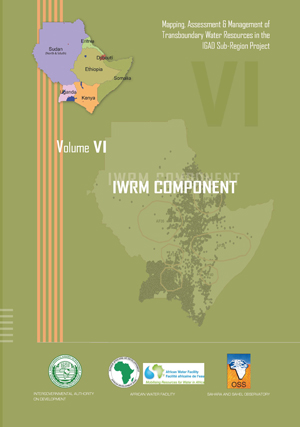Author: OSS & IGAD
Published in: 2011
Project:
Theme: Water resources management
Type: Studies and reports
ISBN: 978-9973-856-63-0
Country:
Mapping, Assessment & Management of Transboundary Water Resources in the IGAD Sub-Region Project: IWRM Component - Vol. VI
Several transboundary river basins and aquifer systems have been identified in the IGAD sub-region. The basis of Integrated Water resources Management (IWRM) is that different uses of water are interdependent. These uses tend to have cross-border implications. Then implementing IWRM in transboundary basins provides a viable mechanism for addressing the challenges. The problem for most countries is the long history of unisectoral development. Water development and management should be based on a participatory approach, involving users, planners and policymakers at all levels.
It appears that modeling water resources management in the IGAD sub-region is challenging. Water resources are sparsely distributed in space and highly variable in time. Additionally, data on water demand and usage are scarce and can be unreliable in areas where they exist. Thus, the need for Water Evaluation and Planning were obvious.
The WEAP model was used for modeling water resources management in the IGAD sub-region. It allows to analyse the effect of polices interventions (both structural and non-structural) on water resources availability and demand in a region. The demand and supply data were collected at national and international level and used. The model was then successfully developed for six transboundary river basins in the IGAD sub-region. Alternative water management scenarios were simulated. The results have shown very optimistic results, ensuring that the IGAD sub-region has considerable water resources which, if well managed, can serve the needs of the basin inhabitants.
The implementation of IWRM is complicated by lack of political will, lack of institutional and legal tools and also lack of human resources capacity. An overall plan is required to envisage how the transformation can be achieved and this is likely to begin with a new water policy to reflect the principles of sustainable management of water resources. To put the policy into practice is likely to require the reform of water law and water institutions. This can be a long process and needs to involve extensive consultations with affected agencies and the public.
Training of model users will help in ensuring that the use of the model is integrated in their daily work and a critical mass of professionals can be built to implement the model at Transboundary basin level. The IWRM models were built from the data available at the time of analysis. The main idea behind the development of the models was the models will evolve over time as more information about water resources, demand and other policy issues becomes available.
